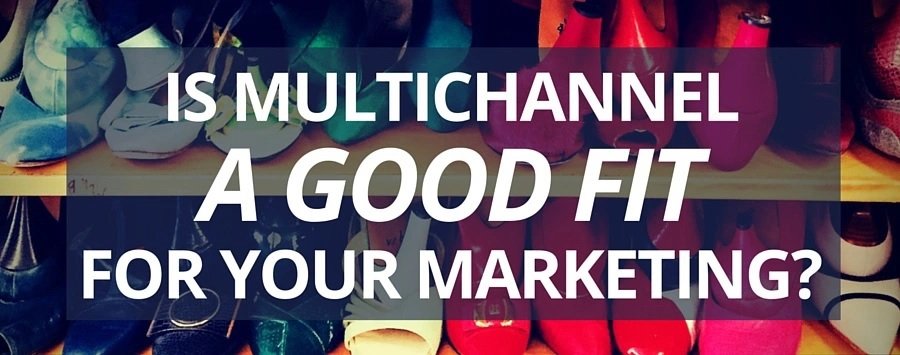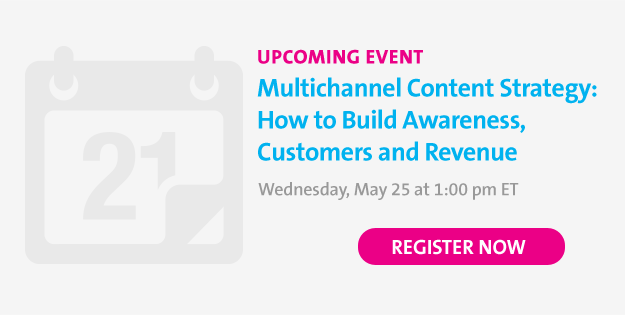Deep Dive into Why Multichannel Marketing is Worth the Work
 You walk by a shoe store, and an ad in the window piques your curiosity. However, you’re in a hurry and can’t stop to try on the new shoes they’re promoting.You do have time to run a quick search on your phone for information about the shoes. You read through a few of the reviews and articles you find.The shoes are a bit out of your budget, though. You’re the type of shopper who needs to think over a purchase like this.Later on, you scroll your Instagram feed and several photos in, the shoes pop up in a sponsored post for the store. You scroll past it, surprised. You visit a site to check the weather and on the side of the page, the shoes pop up again.You sleep on it. In the morning you wake up to an email with a coupon from the store.Coincidence? Probably not. But you take the coupon into the store and purchase those shoes you can’t seem to get out of your head.How did this happen?Through a well-planned approach to content promotion, the brand was able to reach you at different points during your decision-making process with messages you wanted to see.The continued influx of mobile devices and digital channels empowers customers to make decisions about brands before ever stepping foot in a store or speaking to a sales representative.As a marketer, you must prioritize communicating with these prospects across all of the channels they use.I recently sat down with Matt Heinz, president of Heinz Marketing and one of the guest speakers during PR Newswire’s next webinar, to discuss the benefits and challenges of a multichannel content strategy.“There’s plenty of research that indicates you see an acceleration of awareness building and intent when people see you in multiple places,” says Matt. “There is a difference between showing up one place five times and showing up five places once. When you increase your channel diversity, you’re increasing the velocity with which your prospects become aware of you, understand you and have interest in doing business with you.”What’s stopping your brand from trying multichannel?As with any large undertaking, though, there are challenges to successfully rolling out a multichannel marketing program.“In larger organizations, media channels are managed in silos. It can be difficult to coordinate your multichannel execution because everyone has a different schedule, a different agenda and in many cases, a different budget,” explains Matt.“Executing a multichannel approach requires very tight coordination between those teams, a prioritization from the senior levels of your marketing organization, and an understanding that the sum of all those parts together is going to achieve better results than those parts working in isolation individually.”How can you make multichannel work for you?Bringing a multichannel program to market may take time, people, and money. However, don’t let these hurdles discourage you.Synchronizing your marketing efforts across all of your brand’s channels can increase your efficiency and potentially decrease the amount of marketing you need to do to deliver ROI.According to Matt, “You can make a case to your CMO and even to your CFO that this is a more efficient way of marketing, that you can actually achieve better results by spending less money. You can very much make a financial business case for why this should be done.”If you could offer your audience multiple opportunities to be delighted by your brand, wouldn’t you do it? Shouldn’t you do it?Overcome roadblocks by focusing on channel prioritization and content diversification.“Your channel mix needs to be tied to who your target audience is and where they are. If you’re marketing to a baby boomer audience, you probably aren’t spending a lot of time on Snapchat. If you’re marketing to millennials or younger, then you probably are,” says Matt.He cautions, though, that “if you’re relying on the same creative and the same offers over and over again, there reaches a point where your audience is not going to respond. It’s more about diversifying the message, diversifying the offer.”“Questions about where to market and what channels to use always go back to your target audience,” explains Matt. “‘Who is your customer, who are your prospects, where do you find them, where are they hanging out, who and what influences them?’ The answers to those questions will help you develop your multichannel mix.”On Wednesday, May 25 at 1 PM ET, get more multichannel marketing advice from Heinz Marketing President Matt Heinz, as well as Annuitas Chief Strategy Officer & Principal Adam B. Needles, during the webinar Multichannel Content Strategy: How to Build Awareness, Customers and Revenue.
You walk by a shoe store, and an ad in the window piques your curiosity. However, you’re in a hurry and can’t stop to try on the new shoes they’re promoting.You do have time to run a quick search on your phone for information about the shoes. You read through a few of the reviews and articles you find.The shoes are a bit out of your budget, though. You’re the type of shopper who needs to think over a purchase like this.Later on, you scroll your Instagram feed and several photos in, the shoes pop up in a sponsored post for the store. You scroll past it, surprised. You visit a site to check the weather and on the side of the page, the shoes pop up again.You sleep on it. In the morning you wake up to an email with a coupon from the store.Coincidence? Probably not. But you take the coupon into the store and purchase those shoes you can’t seem to get out of your head.How did this happen?Through a well-planned approach to content promotion, the brand was able to reach you at different points during your decision-making process with messages you wanted to see.The continued influx of mobile devices and digital channels empowers customers to make decisions about brands before ever stepping foot in a store or speaking to a sales representative.As a marketer, you must prioritize communicating with these prospects across all of the channels they use.I recently sat down with Matt Heinz, president of Heinz Marketing and one of the guest speakers during PR Newswire’s next webinar, to discuss the benefits and challenges of a multichannel content strategy.“There’s plenty of research that indicates you see an acceleration of awareness building and intent when people see you in multiple places,” says Matt. “There is a difference between showing up one place five times and showing up five places once. When you increase your channel diversity, you’re increasing the velocity with which your prospects become aware of you, understand you and have interest in doing business with you.”What’s stopping your brand from trying multichannel?As with any large undertaking, though, there are challenges to successfully rolling out a multichannel marketing program.“In larger organizations, media channels are managed in silos. It can be difficult to coordinate your multichannel execution because everyone has a different schedule, a different agenda and in many cases, a different budget,” explains Matt.“Executing a multichannel approach requires very tight coordination between those teams, a prioritization from the senior levels of your marketing organization, and an understanding that the sum of all those parts together is going to achieve better results than those parts working in isolation individually.”How can you make multichannel work for you?Bringing a multichannel program to market may take time, people, and money. However, don’t let these hurdles discourage you.Synchronizing your marketing efforts across all of your brand’s channels can increase your efficiency and potentially decrease the amount of marketing you need to do to deliver ROI.According to Matt, “You can make a case to your CMO and even to your CFO that this is a more efficient way of marketing, that you can actually achieve better results by spending less money. You can very much make a financial business case for why this should be done.”If you could offer your audience multiple opportunities to be delighted by your brand, wouldn’t you do it? Shouldn’t you do it?Overcome roadblocks by focusing on channel prioritization and content diversification.“Your channel mix needs to be tied to who your target audience is and where they are. If you’re marketing to a baby boomer audience, you probably aren’t spending a lot of time on Snapchat. If you’re marketing to millennials or younger, then you probably are,” says Matt.He cautions, though, that “if you’re relying on the same creative and the same offers over and over again, there reaches a point where your audience is not going to respond. It’s more about diversifying the message, diversifying the offer.”“Questions about where to market and what channels to use always go back to your target audience,” explains Matt. “‘Who is your customer, who are your prospects, where do you find them, where are they hanging out, who and what influences them?’ The answers to those questions will help you develop your multichannel mix.”On Wednesday, May 25 at 1 PM ET, get more multichannel marketing advice from Heinz Marketing President Matt Heinz, as well as Annuitas Chief Strategy Officer & Principal Adam B. Needles, during the webinar Multichannel Content Strategy: How to Build Awareness, Customers and Revenue. Click here to register for our May 25 webinar and then join Matt and Adam to learn:
Click here to register for our May 25 webinar and then join Matt and Adam to learn:
- How to map your content to the buyer’s journey
- Strategic tips to create metrics for content plans
- How to track revenue and success within a multichannel content plan
- How to use multichannel strategies and incorporate them into your goals

